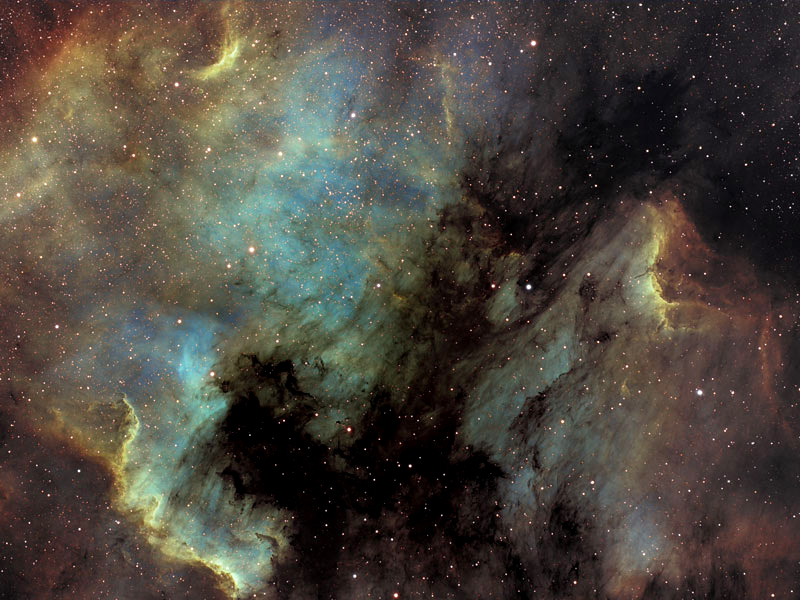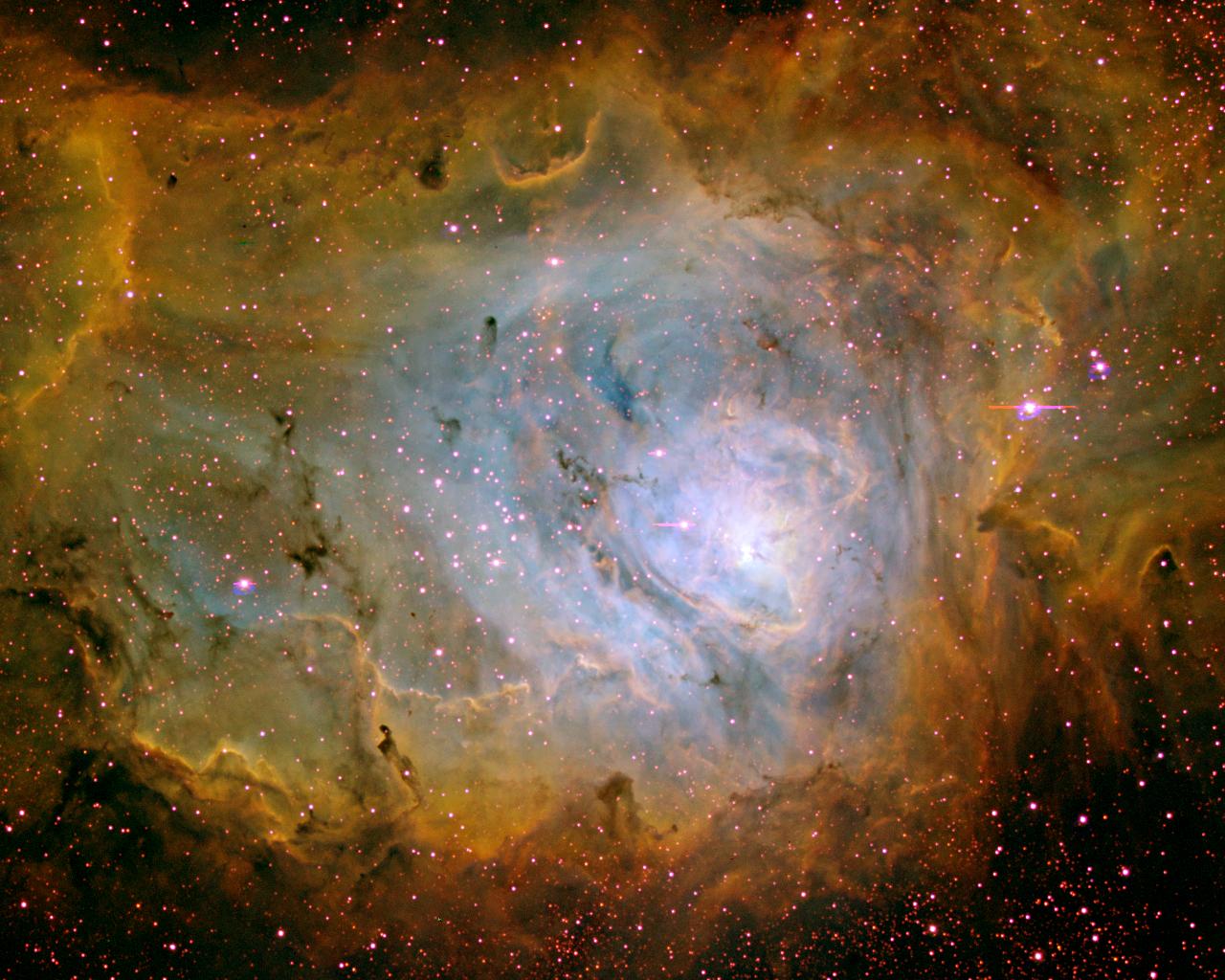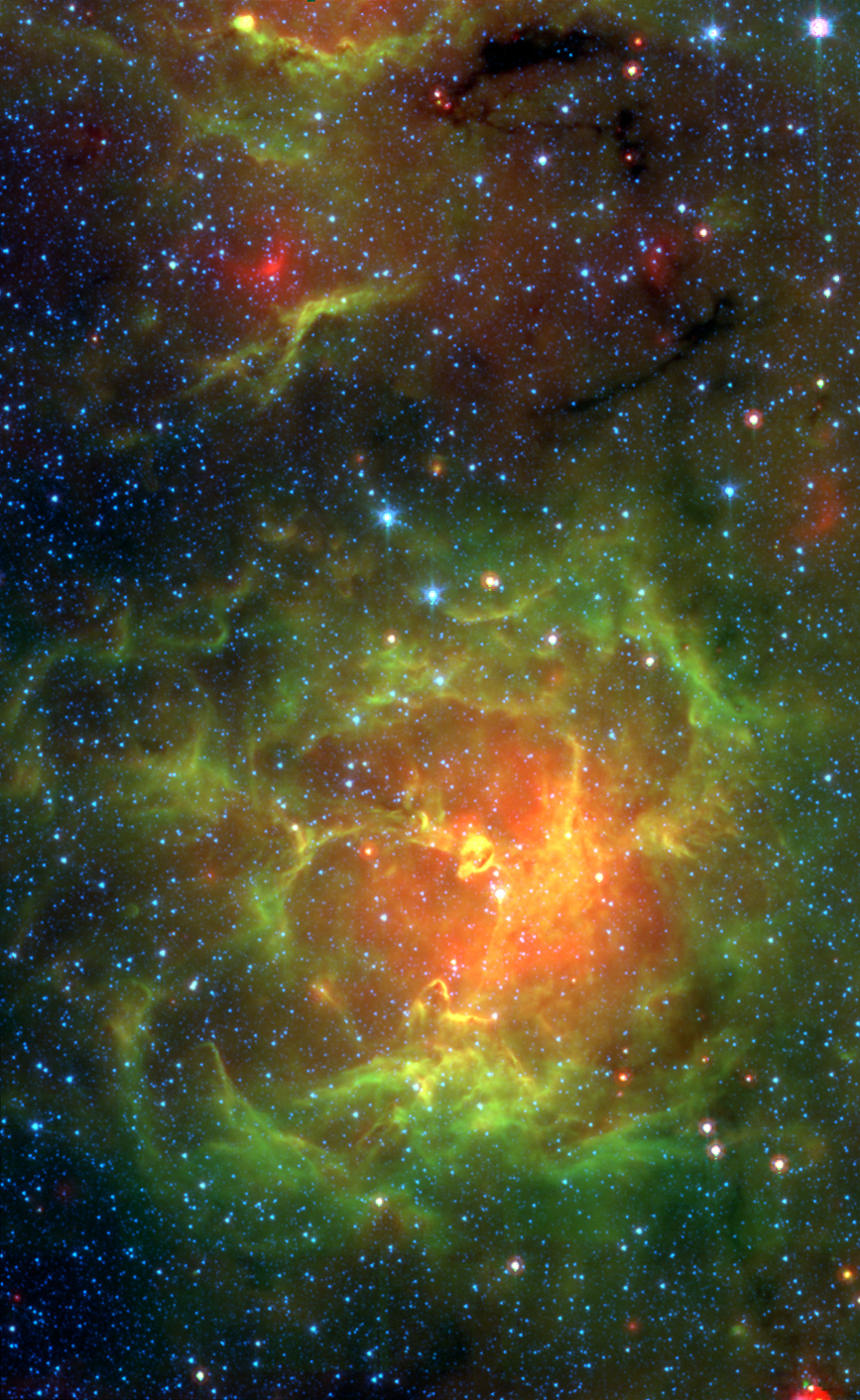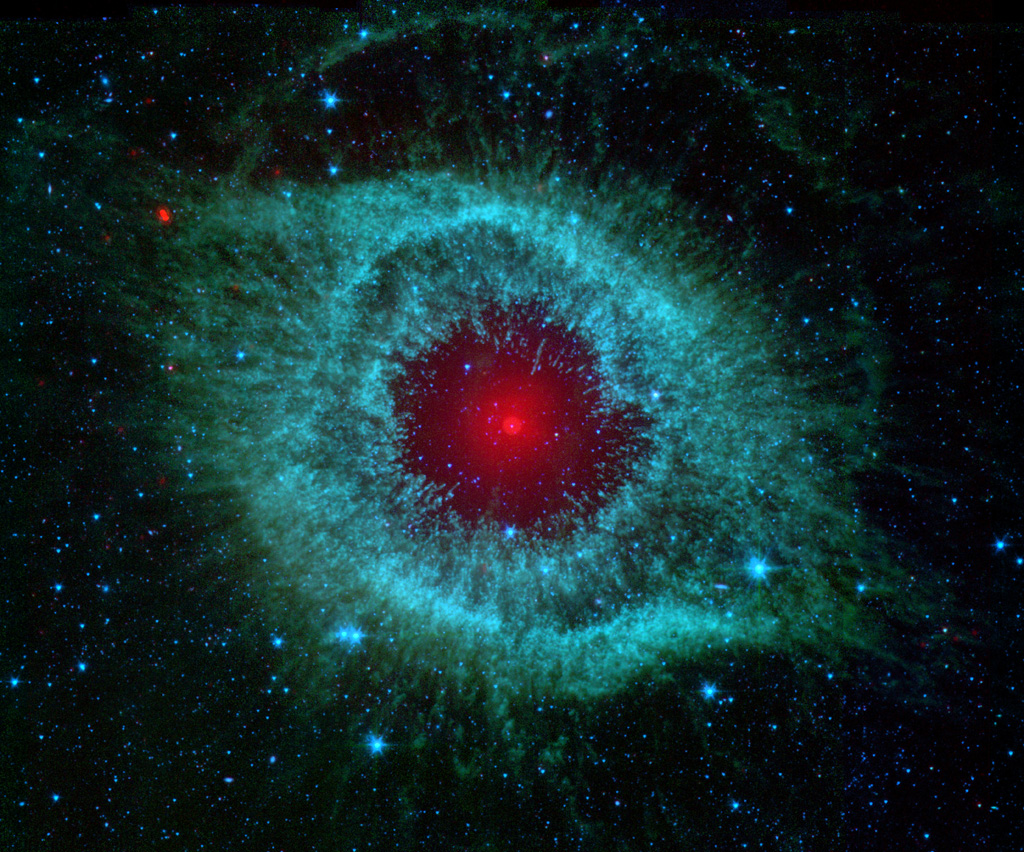The nebula NGC 7000 or North America nebula is a nebula of enormous emission (3x2.3 degree.
NGC 7000 is visible in the bare eye in the Milky Way, in 3 degrees east of Deneb in the constellation of the Swan. By a long photographic exposure, this nebula looks like the outline of the continent of North America, with a particularly good replica of the Gulf of Mexico.
Its red light is due to the gas of warmed hydrogen. Several other nebulas (IC 5070, IC 5068) are nearby of NGC 7000.
NGC 7000 is a chaotic complex within which get involved and become confused, dark veils of absorbent matter and vast stellar clouds were incited by an extremely warm blue star of the name of HD 199579.

Brilliant Misty of the Lagoon is a magnificent, easily visible object in the bare eye as a big foggy task situated at a distance considered in 5000 years light. M8 is a very big nebula with brilliant emission with an incorporated opened group.
This group of young stars warms the gas of the nebula, it causes a emission of light. Seen through binoculars the way sinks which divides the brilliant regions of the nebula, looks like a lagoon where from the name of this object.
With a small telescope we begin to perceive the complex folds of this nebula and the dark regions among more brilliant sectors. The dark parts of the nebula are the dense clouds of gas and dusts which are a nursery of stars.
To the naked eye, the light of the heap is dominated by a red global light which is provoked by the brilliant gaseous hydrogen, whereas dark strands result from the absorption by dense bands of dust.
The image opposite, taken by the telescope Curtis-Schmidt, show the nebula in emission in three precise colors emitted specifically by the hydrogen, the oxygen and the sulfur.
The Lagoon Nebula is situated in approximately 5000 light years of the Earth in the constellation of the Sagittarius. The nebula covers a region furthermore with three times the diameter of the Full moon.

Magnificent rose of the heavens of the north hemisphere, the nebula by emission IC 410 or NGC 1893 is in about 12 000 light years of us in the constellation of the Coachman.
Brilliant cloud of hydrogen measures more than 100 light years of length.
It was sculptured by the stellar winds and the radiations emitted since the heap opened by stars NGC 1893 nested within it.
Formed in the interstellar cloud there is hardly 4 million years, the brilliant stud with the heap are visible just below the vast dark cloud of dust close to the center of the image. Within 7 hours of this sight with big field detailed well, we notice two relatively dense currents of matter seeming to pass by central regions of the nebula. Possible places of formation of stars, these cosmic tadpoles measure about 10 light years of length.

Trifide nebula is brilliant misty circular one situated in the Sagittarius, rich in stars. It is at the same moment a nebula with emission and with reflection.
Bands of dark dusts seem to divide the nebula into three fragments, where from its name.
The nebula M20 appears as a big cloud of interstellar matter situated at a distance estimated at 5 200 light years, in which the very warm stars draw a red anemone.
Visible in the bare and very easily locatable eye with a simple pair of binoculars.
Nebula Trifide was discovered by Guillaume Le Gentil in 1750.
The origin of the current name of M20 is attributed to John Herschel.
The objectors in the Anglicism can give to M20 the nickname of nebula of the Clover. The nebula Trifide shares the star of this region extremely rich in the sky with numerous brilliant objects near, notably the nebula of the Lagoon situated near.
A triple system of stars occupies the center of the emissive region of the nebula, in the style of the Trapeze of the nebula of Orion.
This spectacular sight wrongly colored is taken by the Telescope Spatial Spitzer.
The astronomers used the infrared images Spitzer to consider embryonic stars hidden in the native dust of this schemer stellar crèche.
This image shows the nebula divided into three dark parts, darkening zones of dust which reveal strands of gas as well as births of brilliant stars.

Helix nebula is a cosmic star often photographed by the amateur astronomers for its lively colors and its resemblance with a gigantic eye.
The nebula discovered to 18th century, is situated in approximately 650 light years in the constellation of the Aquarius and belongs to a class of called objects misty global. The global nebulas are the vestiges of stars which looked like in their past our Sun. When these stars die, they expel in the space their external gaseous layers. These layers are warmed by the warm nucleus of the dead star, a white dwarf, and shine in the infrared and visible wavelengths. Our Sun will undergo the same evolution when he will die in approximately five billion years. Infrared light of the external gaseous layers is represented in blue and in green. The white dwarfish star is the tiny white point in the center of the photography. Red color in the middle of the eye represents the last layers of gas blown during the death of the star.
The brilliant red circle situated in the center is the light of a disk of dust surrounding the white dwarfish star.
All the internal planets of the system were carbonized or vaporized whereas the volume of the dying star increased.

1997 © Astronoo.com − Astronomy, Astrophysics, Evolution and Ecology.
"The data available on this site may be used provided that the source is duly acknowledged."
How Google uses data
Legal mentions
English Sitemap − Full Sitemap
Contact the author